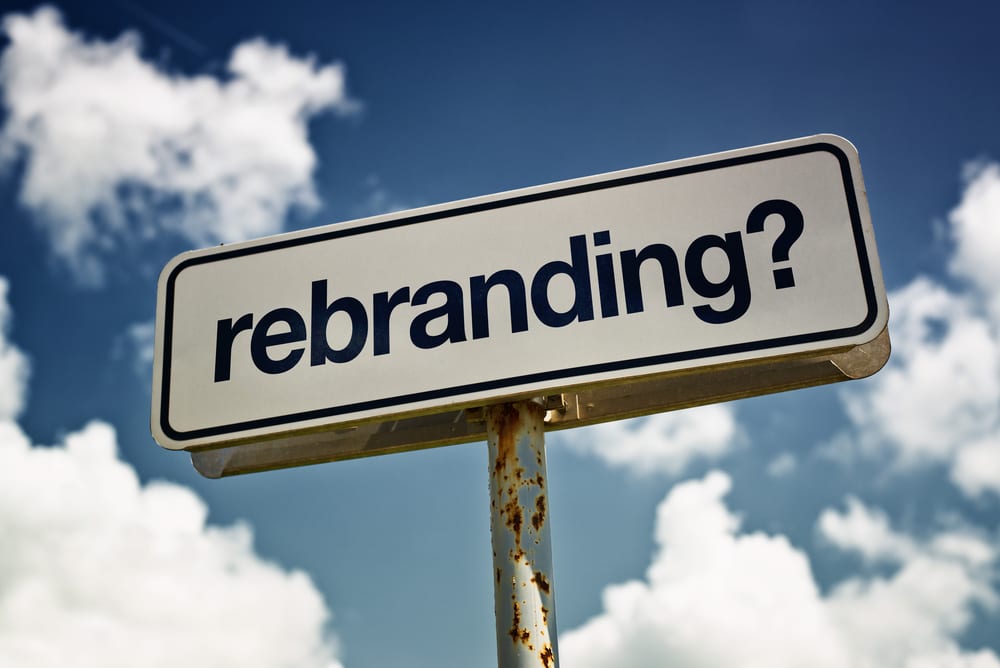Rebranding is inevitable for most long-running businesses. Almost every major international company, from McDonalds to Starbucks, has experienced several rebrands – from minor tweaks to major brand overhauls.
Rebranding doesn’t just mean changing the company logo, or updating a website. If done thoroughly, a rebrand should resonate right down to the core of the business, including an evaluation of the company’s core values and mission statement, extensive research, and meticulous planning.
Should you rebrand?
There are many reasons why a company might choose to rebrand.
- Anticipating change – You could be anticipating a change in the market, perhaps due to advances in technology, a significant move from your competitors, or an upcoming merger with another company.
- Change is overdue – Outdated branding can turn customers away, particularly if the competition’s branding is superior. Alternatively, your product range may have expanded considerably since the original launch, and a rebrand might be required to consolidate the company’s portfolio under one banner.
- Reacting to an event – Occasionally, negative PR is so disastrous that the only way the company could possibly survive is by rebranding. Philip Morris Companies Inc. did just that in 2003, rebranding to Altria Group Inc. after the CEO stated that smoking-related deaths had ‘positive effects’.
What does a rebrand involve?
In short, a rebrand involves a great deal of research. It’s important to bear in mind that the market may have changed considerably since your company first launched – particularly if you’ve been in business for a number of years.
You won’t just need to research the market. You’ll also need to analyse your competitors, and your company’s own current position. It’s important not to disregard your current brand equity – alienating your existing customers could result in disaster for your business.
You’ll also need to make significant investments, in both time and money. It’s essential that your brand looks polished and professional – which could mean hiring an expensive designer for your logo and website.
Rebranding tips
Consider these tips when launching your rebrand:-
- Your company needs to lead the discussion. Don’t leave your existing customers to discover your new look themselves – spread the word through newsletters, social media accounts, and in-store displays.
- Similarly, don’t neglect the press. Send out press releases and emails to relevant industry bodies and local news outlet.
- A rebrand doesn’t mean simply changing the company logo. Make sure your vision is supported by solid research and reasoning.
- Make sure your rebrand tells a story. Generic ‘corporate swoosh’ logos and bland designs are a waste of time and money. Make sure your updated brand has a simple, easy-to-understand vision behind it, and convey this to your customers.
- Decide on a launch date, and stick to it. Missing the deadline for your rebrand looks unprofessional, and will put your new business off to a bad start.
If you’re trying to reinvent the company because of a PR disaster, it might be wise to create a radically new brand. However, in all other scenarios it’s wise to retain elements of your old branding. Don’t underestimate the power of your existing brand equity and customer base.
Images: ”rebranding street sign against blue sky with clouds / Shutterstock.com“
__________________________________________________________________________________
 Connect with Tweak Your Biz:
Connect with Tweak Your Biz:
Would you like to write for Tweak Your Biz?
Tweak Your Biz is an international, business advice community and online publication. Today it is read by over 140,000 business people each month (unique visitors, Google Analytics, December, 2013). See our review of 2013 for more information.
An outstanding title can increase tweets, Facebook Likes, and visitor traffic by 50% or more. Generate great titles for your articles and blog posts with the Tweak Your Biz Title Generator.
Want to get your business featured on Tweak Your Biz? Check out #TYBspotlight.


 Connect with Tweak Your Biz:
Connect with Tweak Your Biz:


